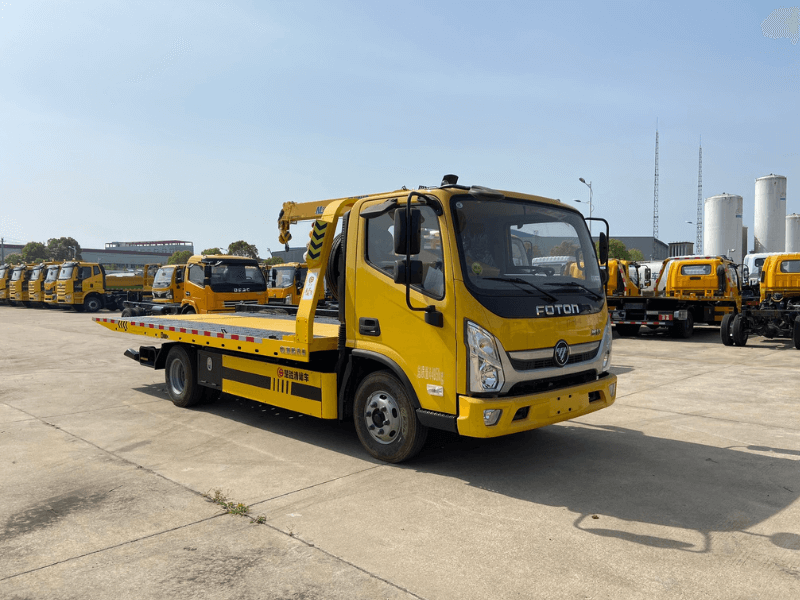Introduction

Garbage compactor trucks play a crucial role in waste management systems around the world. These specialized vehicles are designed to collect and compact solid waste efficiently, making them an essential tool in keeping our cities clean and hygienic. To ensure the smooth operation of garbage compactor trucks, it is vital to understand the various parts that make up these vehicles and their functions. In this comprehensive guide, we will explore the different components of garbage compactor trucks in detail, providing valuable insights into how they work together to facilitate the collection and disposal of waste.
1. Chassis
The chassis is the foundation of any garbage compactor truck, serving as the structural framework that supports all other components. Typically made of high-strength steel, the chassis provides the necessary strength and durability to withstand the rigors of daily operation. It also houses the engine, transmission, and other critical mechanical systems that power the vehicle.
2. Compactor Body
The compactor body is the part of the garbage compactor truck where the waste is collected and compacted. It is typically constructed from robust materials such as steel or aluminum to withstand the abrasive nature of solid waste. The compactor body is equipped with a hydraulically operated compaction mechanism that compresses the waste, reducing its volume and maximizing the truck's carrying capacity.
3. Hydraulic System
The hydraulic system is responsible for powering various functions of the garbage compactor truck, including the compaction mechanism, lifting arms, and other moving parts. It consists of a hydraulic pump, hydraulic fluid reservoir, control valves, cylinders, and hoses that work together to generate and transmit hydraulic power. Proper maintenance of the hydraulic system is essential to ensure smooth and efficient operation of the garbage compactor truck.
4. Compaction Mechanism
The compaction mechanism is the heart of the garbage compactor truck, responsible for compressing the waste collected in the compactor body. It typically consists of a large ram or plate that moves back and forth to compact the waste. The compaction mechanism is powered by the hydraulic system and is controlled by the truck operator from the cab.
5. Lifting Mechanism
The lifting mechanism of a garbage compactor truck is used to raise and empty waste containers into the compactor body. It typically consists of hydraulic arms or forks that can grasp and lift containers of various sizes and shapes. The lifting mechanism plays a crucial role in the efficient collection of waste and is designed to withstand heavy loads and constant use.
6. Control Panel
The control panel is the interface through which the operator controls and monitors the various functions of the garbage compactor truck. It typically features a series of switches, levers, and gauges that allow the operator to operate the compaction mechanism, lifting arms, and other systems. The control panel is designed to be user-friendly and intuitive, enabling the operator to efficiently manage the waste collection process.
7. Electrical System
The electrical system of a garbage compactor truck is responsible for powering various components such as lights, sensors, and safety systems. It includes a battery, alternator, wiring harness, fuses, and relays that ensure reliable operation of electrical components. Proper maintenance of the electrical system is essential to prevent malfunctions and ensure the safety of the vehicle and its operators.
8. Safety Features
Garbage compactor trucks are equipped with a range of safety features to protect the vehicle operators, bystanders, and the environment. These features may include backup cameras, warning lights, alarms, emergency stop buttons, and interlocks that prevent unsafe operation. Regular inspection and maintenance of safety features are essential to ensure the safe and efficient operation of garbage compactor trucks.
9. Maintenance and Troubleshooting
Proper maintenance is crucial to ensure the longevity and reliability of garbage compactor trucks. Regular inspections, lubrication, and replacement of worn parts are essential to prevent breakdowns and costly repairs. In the event of a malfunction, operators should be able to troubleshoot common issues and perform minor repairs to minimize downtime.
Conclusion
Garbage compactor trucks are indispensable tools in waste management systems, helping to keep our cities clean and sustainable. Understanding the various parts of these vehicles and their functions is essential for ensuring their smooth operation and longevity. By maintaining and servicing Water tank truck water treatment , operators can maximize their efficiency and contribute to a cleaner environment for all.
